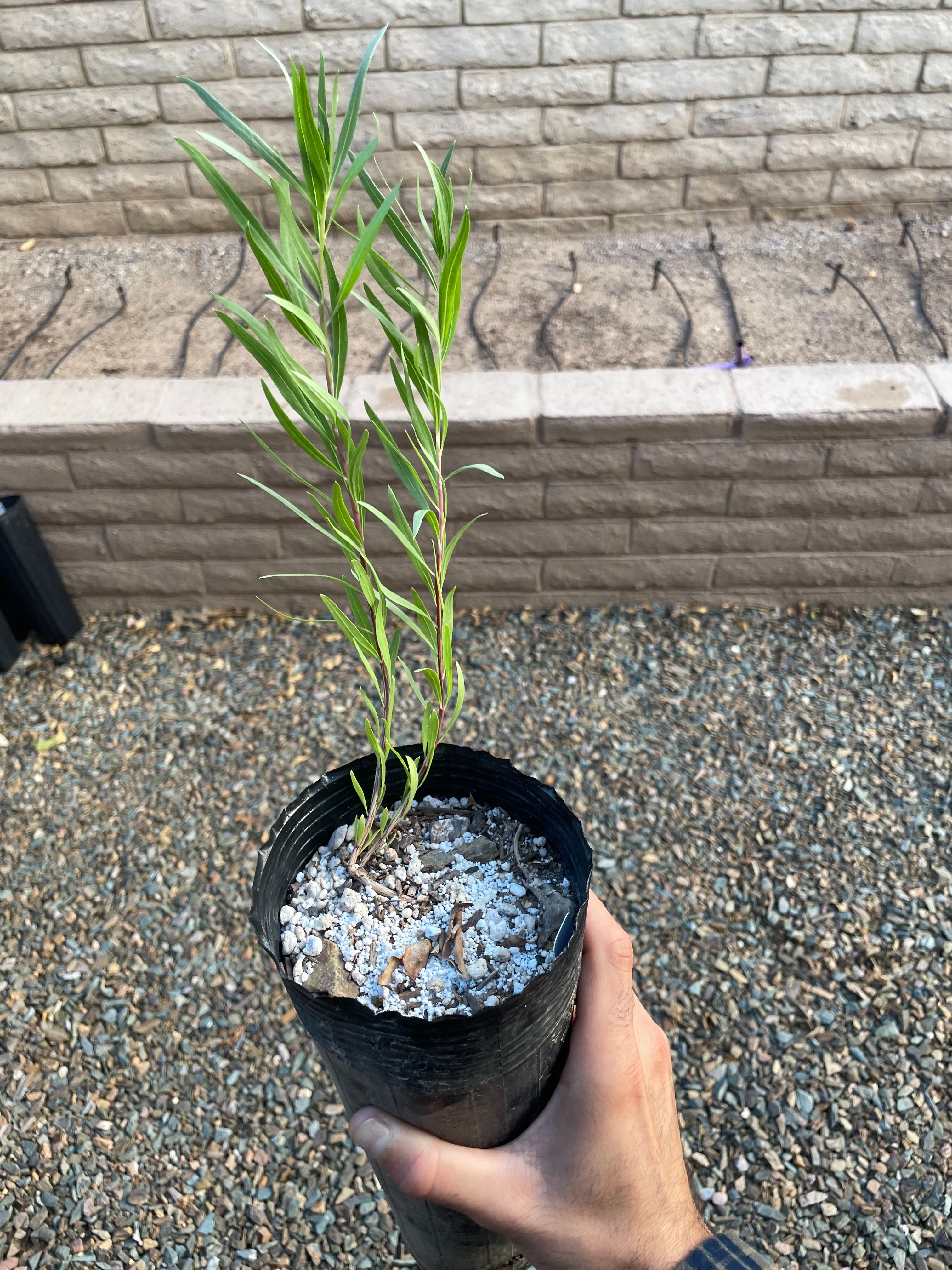Chilopsis linearis (desert willow)

Growth habit: Shrub (Source: USDA Plants)
Duration (Annual/Perennial): Perennial (Source: USDA Plants)
Family: Bignoniaceae
Bloom Color: White , Pink , Purple , Violet (Source: wildflower.org)
Bloom Time: Apr , May , Jun , Jul , Aug , Sep , Oct (Source: wildflower.org)
Bloom Notes: Mostly blooms heaviest May to June but will continue to bloom sporadically throughout the warm season after rains. Flower color ranges from solid white or muted pink to darker rose and purple, as well as two-toned combinations of those colors. Throat often yellow-tinged. Many cultivars available with varying flower colors. (Source: wildflower.org)
USA: AZ , CA , NM , TX (Source: wildflower.org)
Native Distribution: South-central Texas south to Nuevo Leon and Zacatecas, west to southern California and Baja California (Source: wildflower.org)
Native Habitat: Ditches, ravines, depressions, streams, river banks, arroyos, swales, and washes in desert areas (Source: wildflower.org)
Water Use: Low (Source: wildflower.org)
Light Requirement: Sun (Source: wildflower.org)
Soil Moisture: Dry , Moist (Source: wildflower.org)
CaCO3 Tolerance: Medium (Source: wildflower.org)
Drought Tolerance: High (Source: wildflower.org)
Cold Tolerant: yes (Source: wildflower.org)
Heat Tolerant: yes (Source: wildflower.org)
Soil Description: Well-drained limestone soils preferred, but also does well in sands, loams, clays, caliches, granitic, and rocky soils. Minimal organic content the norm. (Source: wildflower.org)
Conditions Comments: Allow to dry out between waterings, as this will encourage more extensive waves of blooms. Avoid excessive water and fertilizer, as that can lead to overly rapid growth, fewer blooms, and a weaker plant. Prolonged saturation can result in rot. Won’t grow as fast or get as large in clay soil but won’t suffer there either. Can be drought-deciduous in some regions. Can survive temperatures as low as 10 degrees F. (Source: wildflower.org)
Riparian shrub/tree found along washes up to 5,000′. Arching branches bear long tubular flowers in pink or lavender, treasured by bees. Native across Southern and Central Arizona riparian zones in the Sonoran and Mohave deserts.